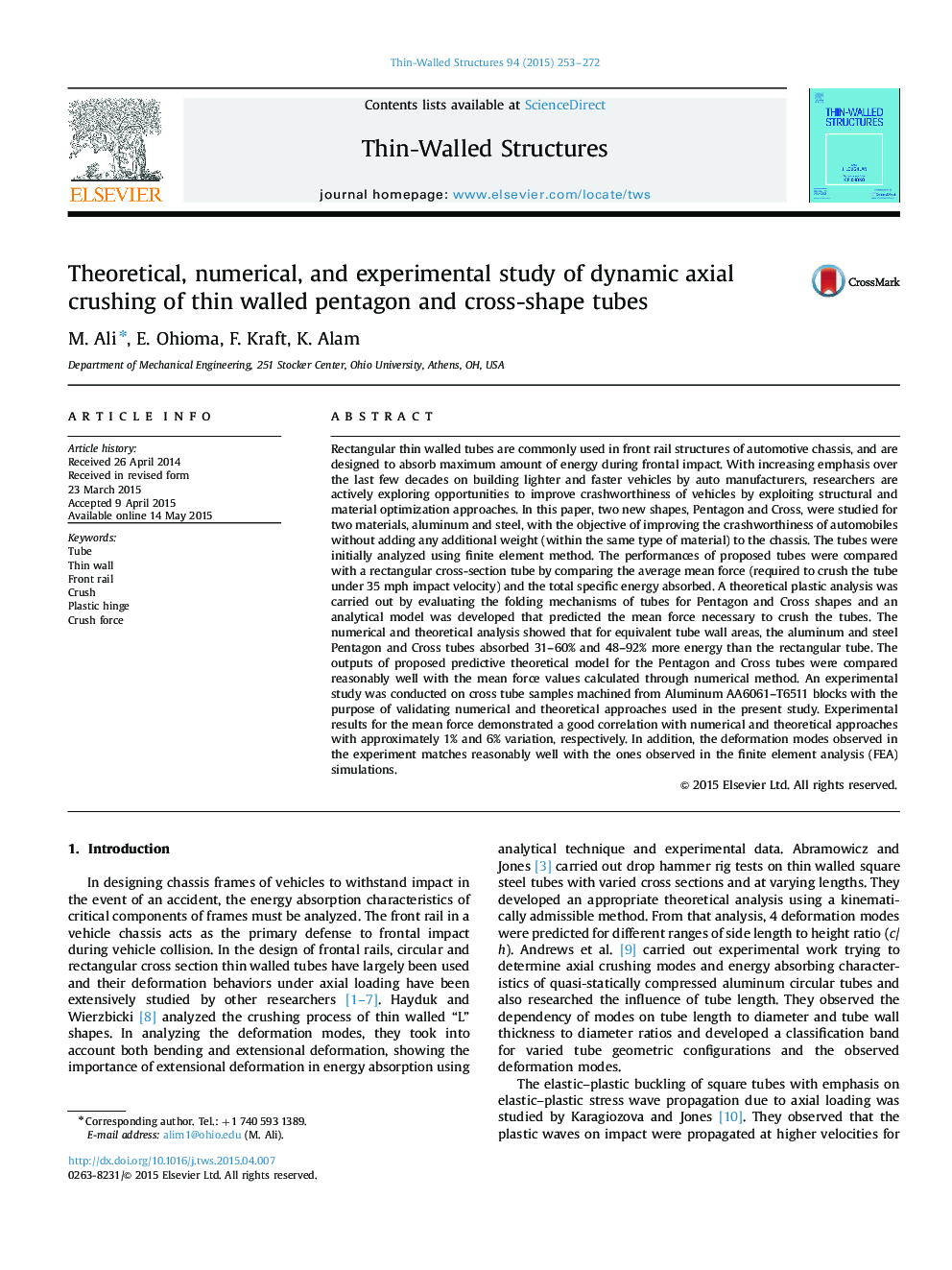| Article ID | Journal | Published Year | Pages | File Type |
|---|---|---|---|---|
| 308530 | Thin-Walled Structures | 2015 | 20 Pages |
•Thin walled Cross and Pentagon tubes as a substitution for Rectangular thin wall members for improved energy absorption.•Theoretical and numerical methods used to calculate crush force and energy absorption of Cross and Pentagon tubes.•Higher specific energy absorption for small tube wall cross-sectional area.•Experimental verification of numerical and theoretical approaches.
Rectangular thin walled tubes are commonly used in front rail structures of automotive chassis, and are designed to absorb maximum amount of energy during frontal impact. With increasing emphasis over the last few decades on building lighter and faster vehicles by auto manufacturers, researchers are actively exploring opportunities to improve crashworthiness of vehicles by exploiting structural and material optimization approaches. In this paper, two new shapes, Pentagon and Cross, were studied for two materials, aluminum and steel, with the objective of improving the crashworthiness of automobiles without adding any additional weight (within the same type of material) to the chassis. The tubes were initially analyzed using finite element method. The performances of proposed tubes were compared with a rectangular cross-section tube by comparing the average mean force (required to crush the tube under 35 mph impact velocity) and the total specific energy absorbed. A theoretical plastic analysis was carried out by evaluating the folding mechanisms of tubes for Pentagon and Cross shapes and an analytical model was developed that predicted the mean force necessary to crush the tubes. The numerical and theoretical analysis showed that for equivalent tube wall areas, the aluminum and steel Pentagon and Cross tubes absorbed 31–60% and 48–92% more energy than the rectangular tube. The outputs of proposed predictive theoretical model for the Pentagon and Cross tubes were compared reasonably well with the mean force values calculated through numerical method. An experimental study was conducted on cross tube samples machined from Aluminum AA6061–T6511 blocks with the purpose of validating numerical and theoretical approaches used in the present study. Experimental results for the mean force demonstrated a good correlation with numerical and theoretical approaches with approximately 1% and 6% variation, respectively. In addition, the deformation modes observed in the experiment matches reasonably well with the ones observed in the finite element analysis (FEA) simulations.
